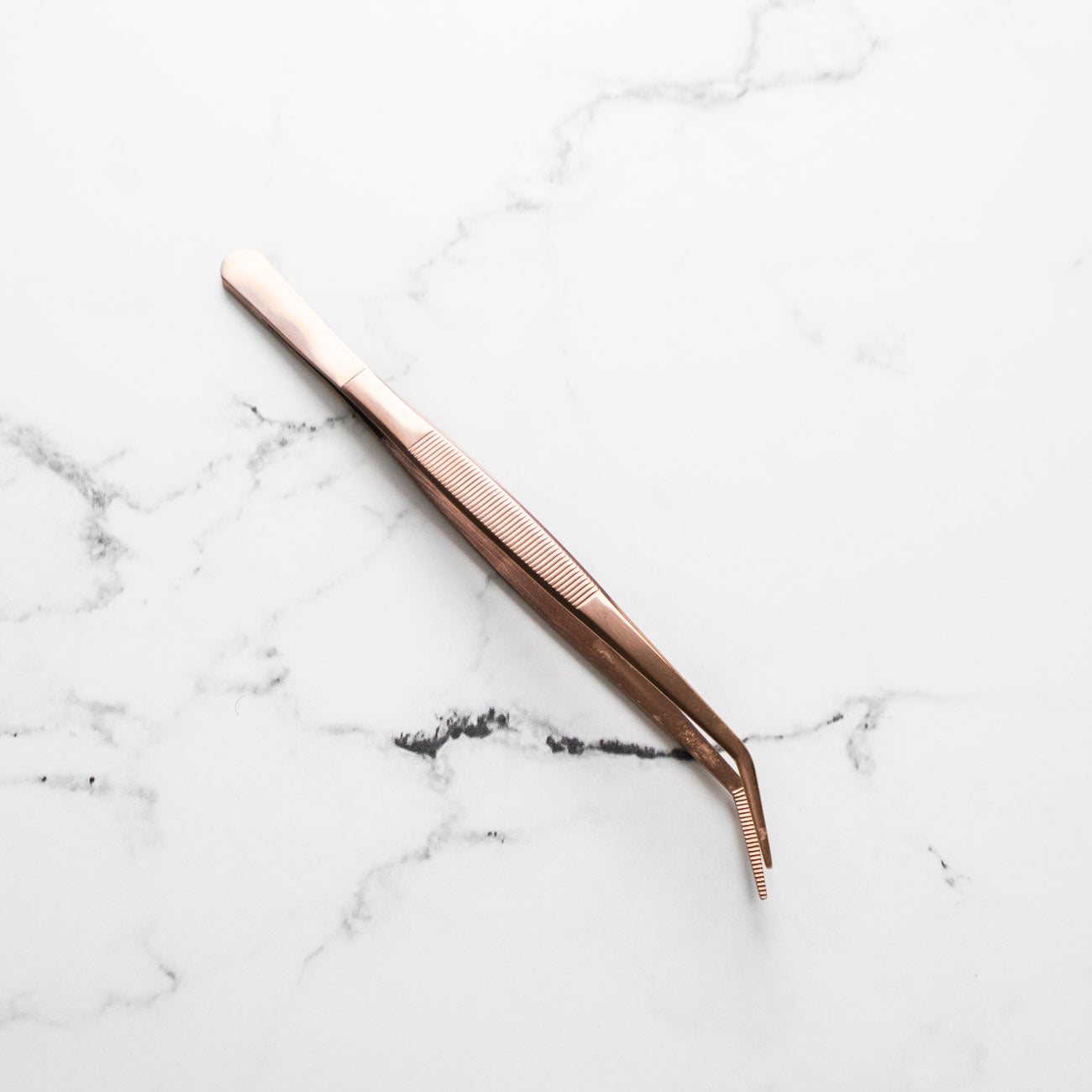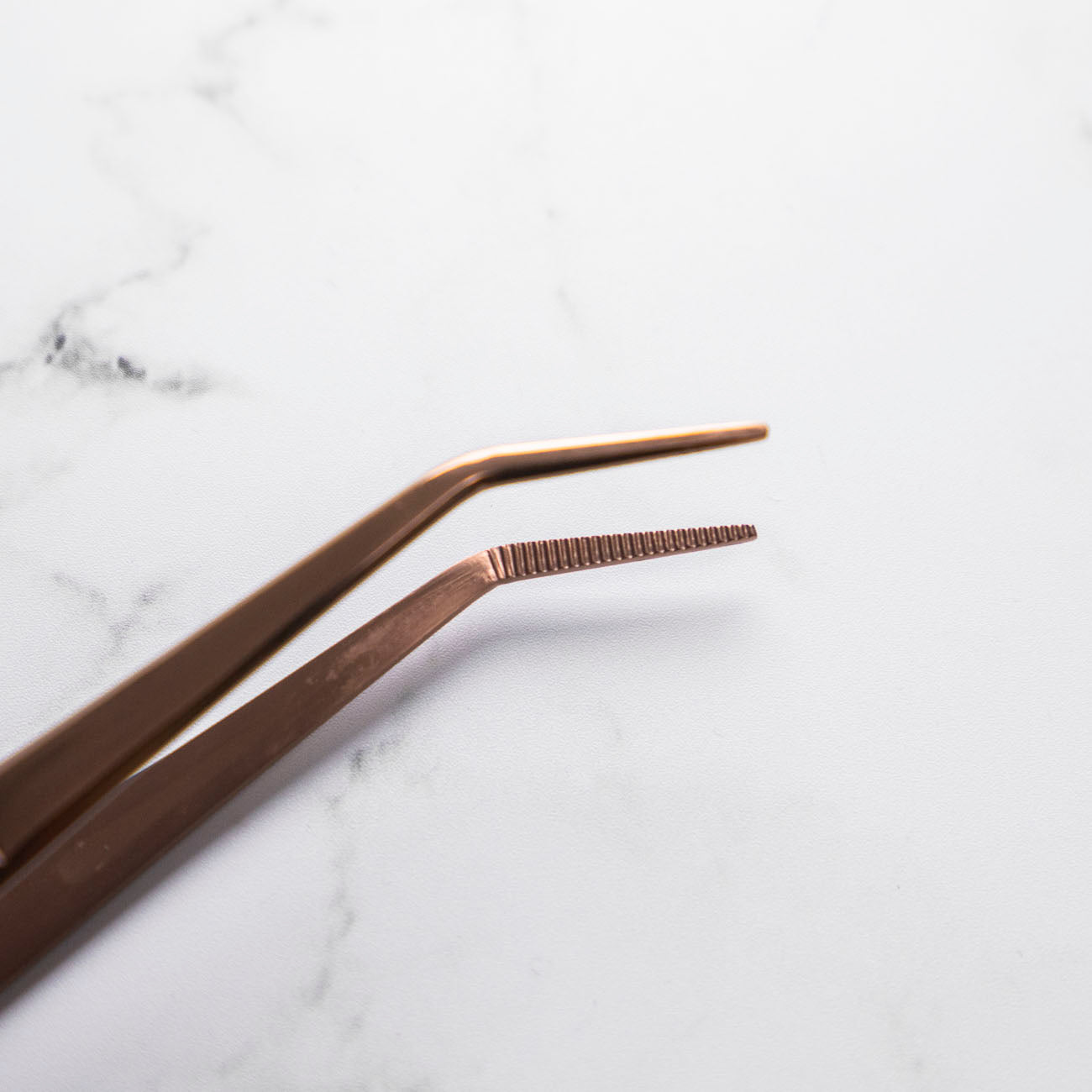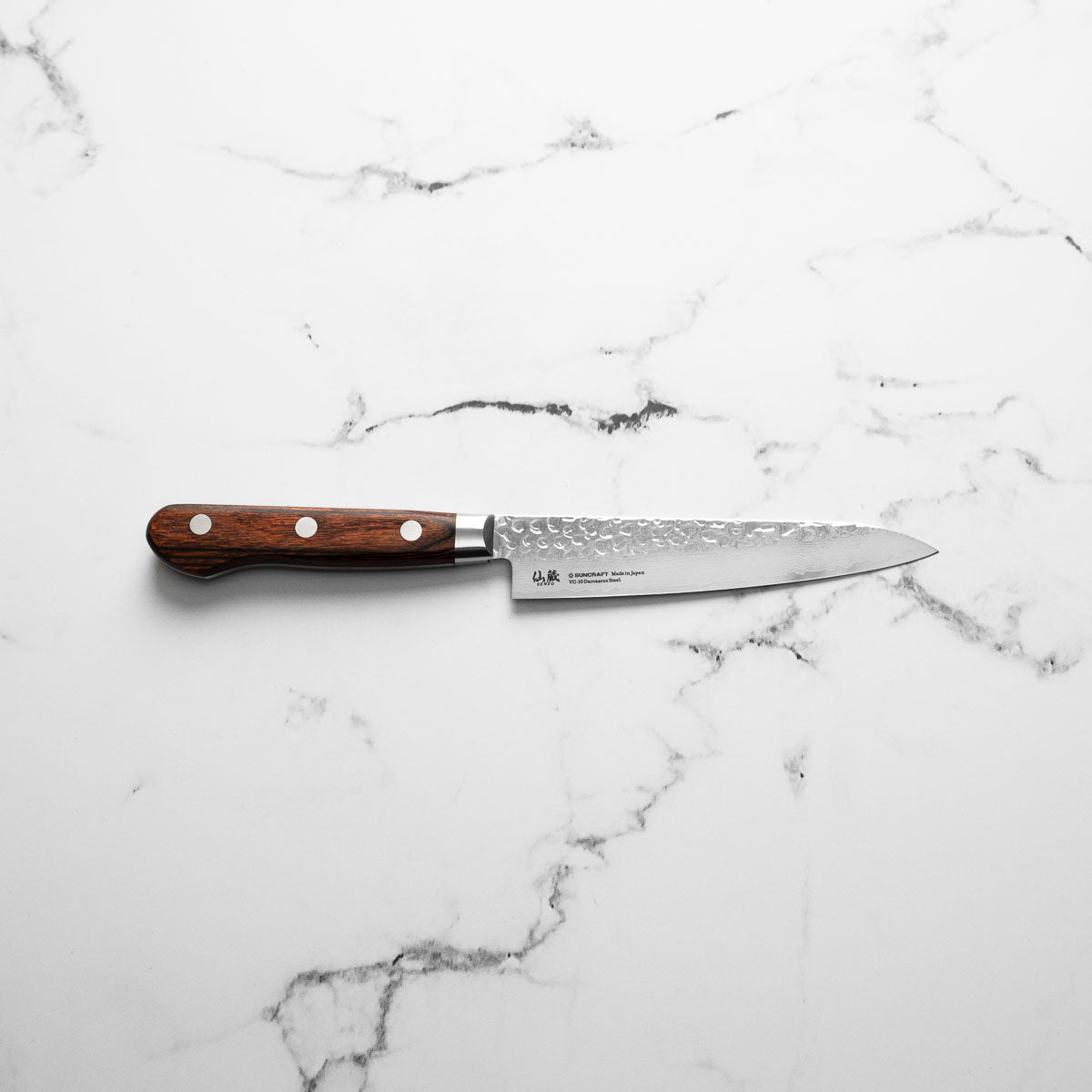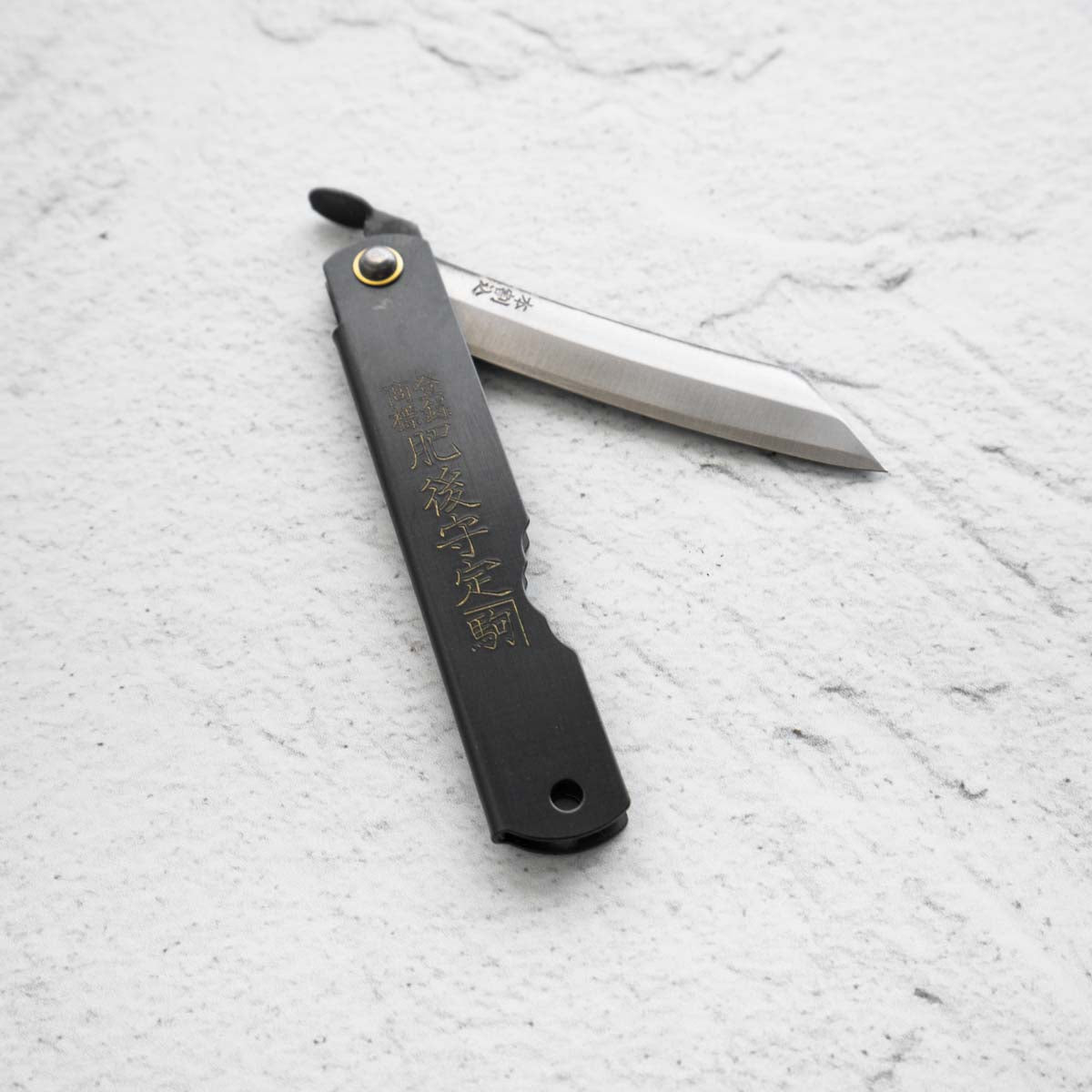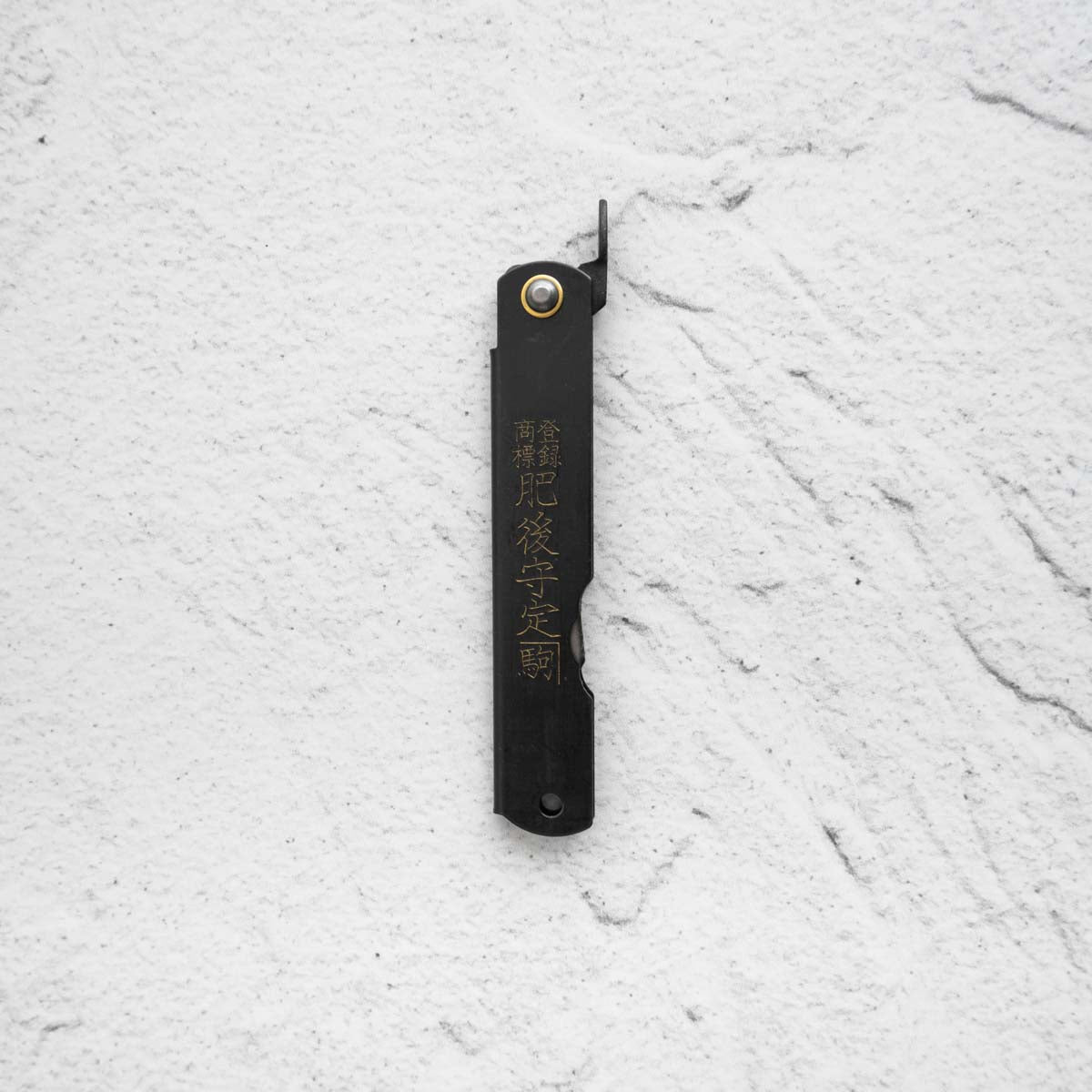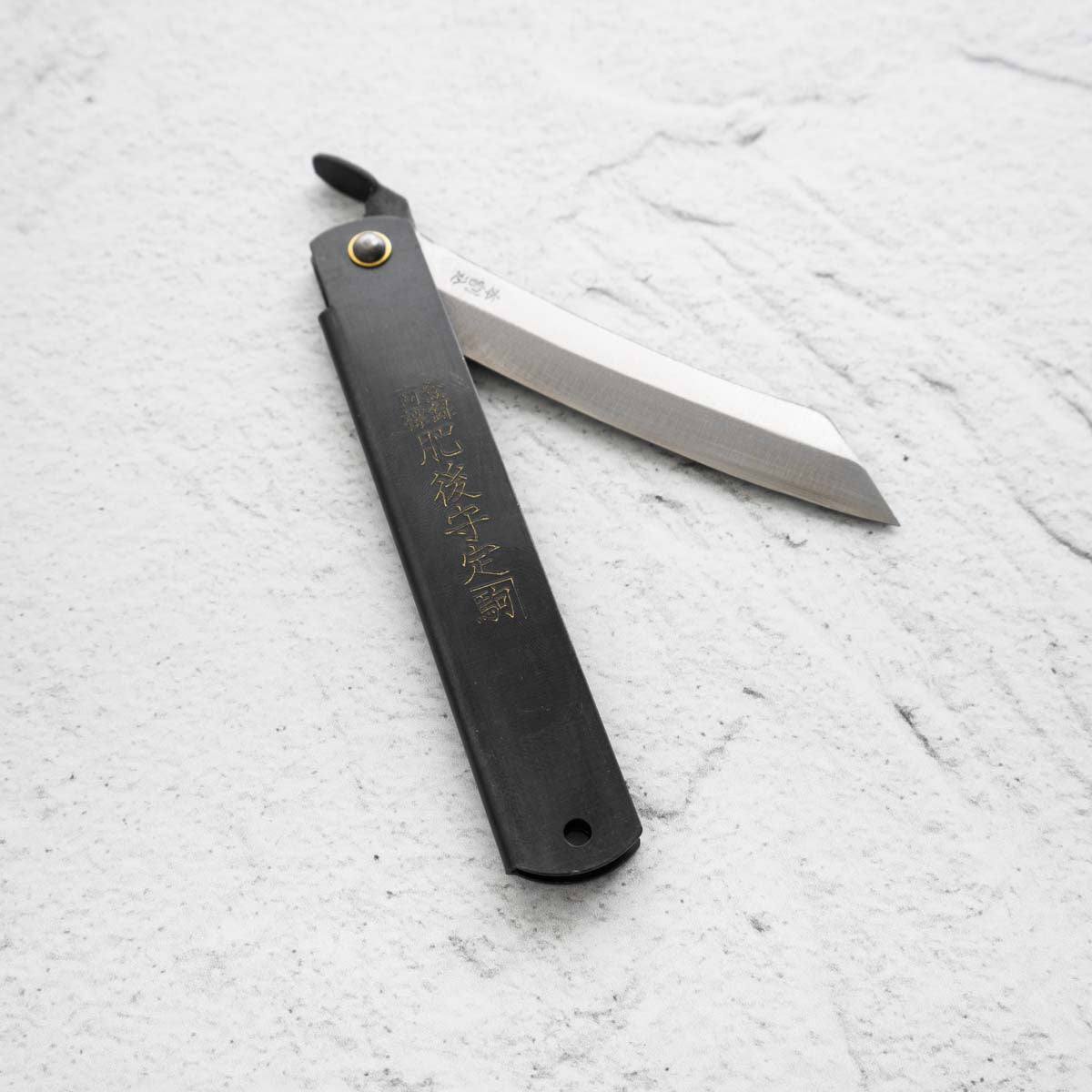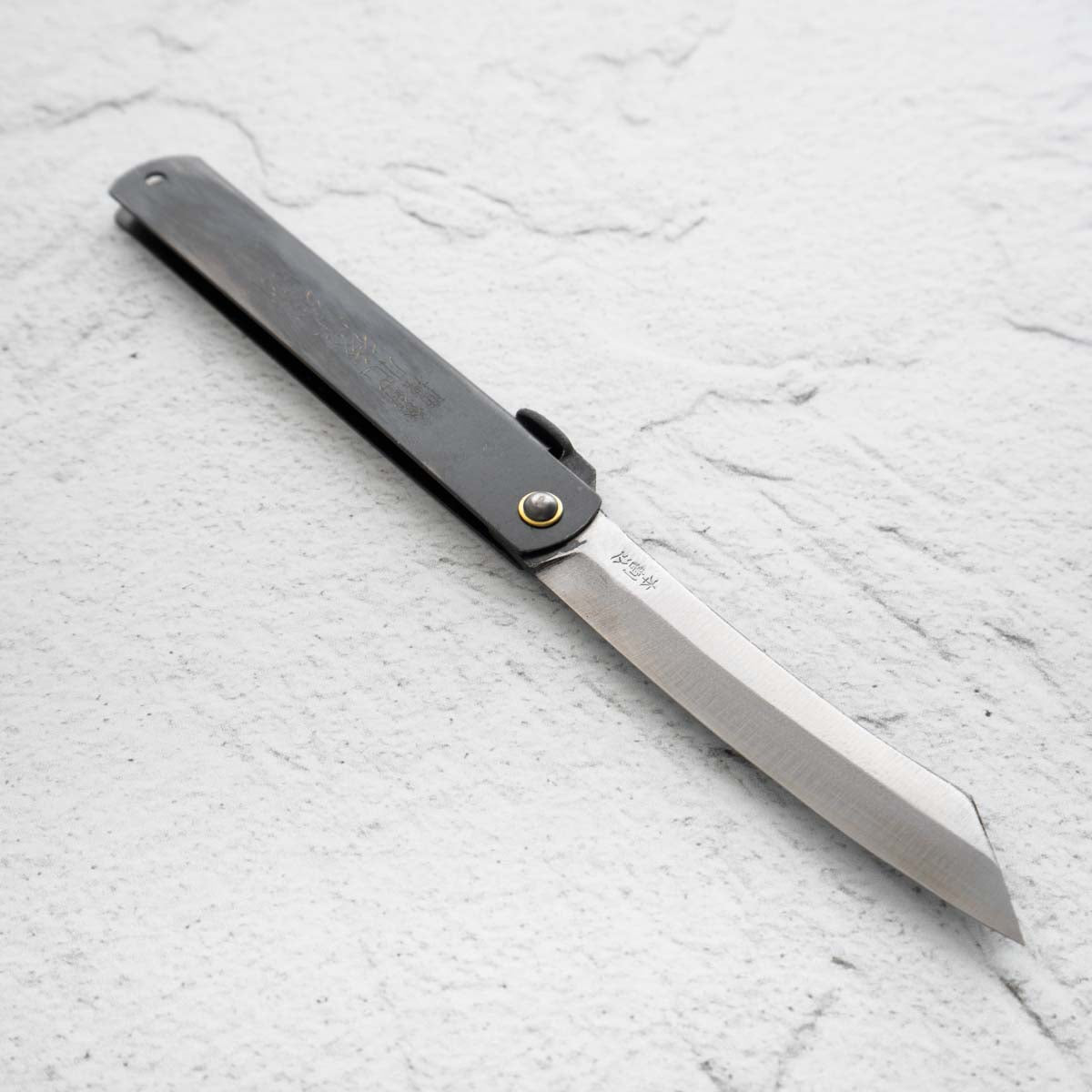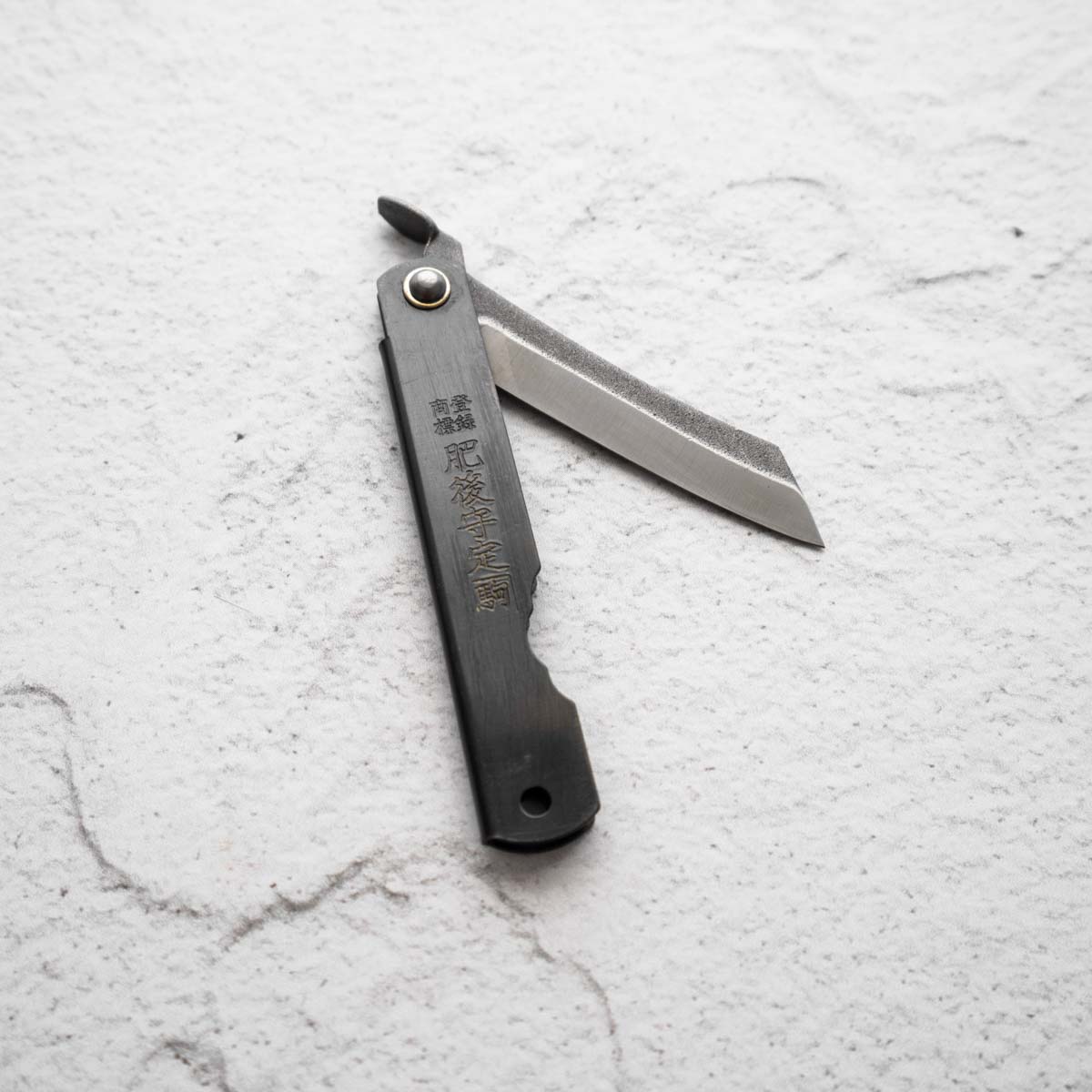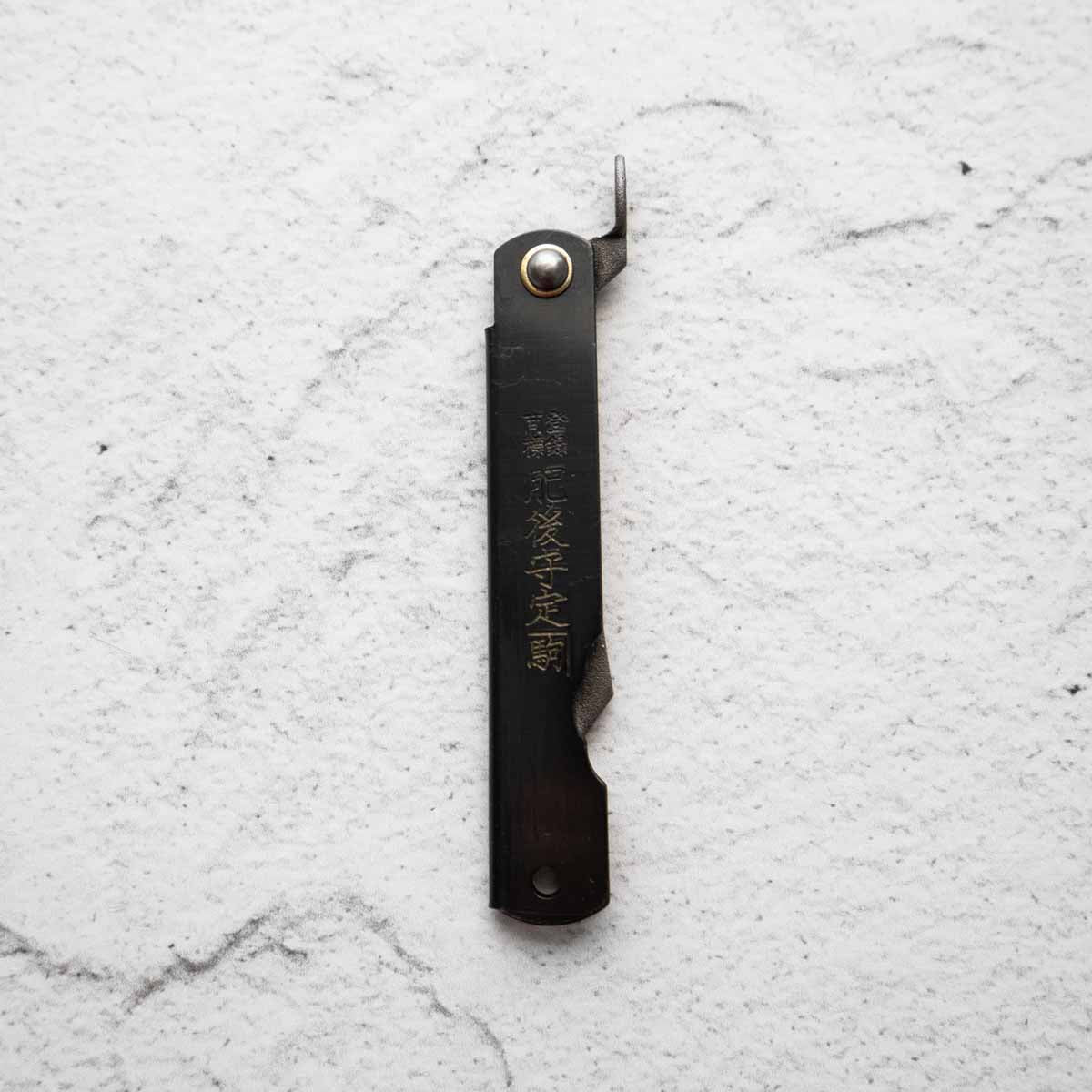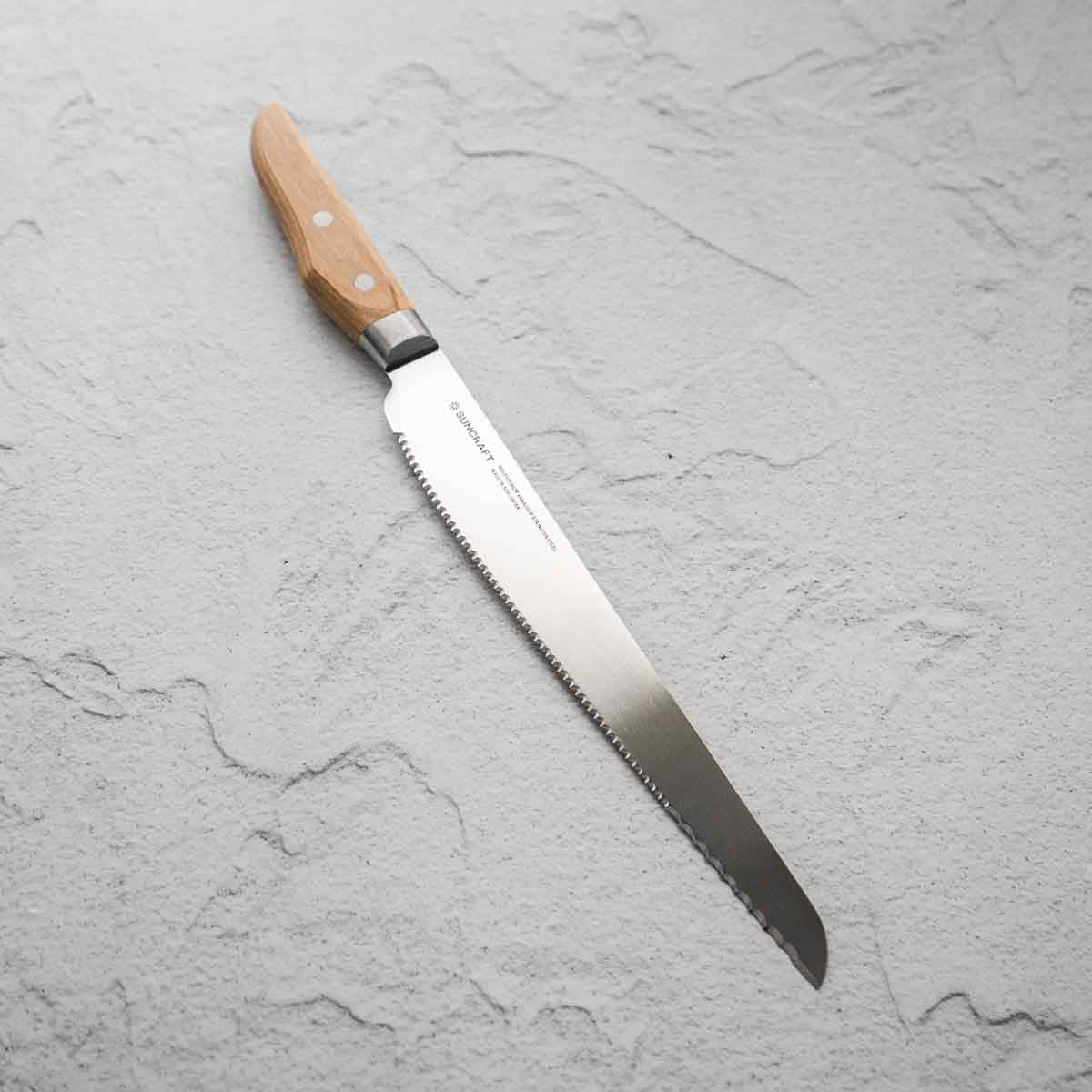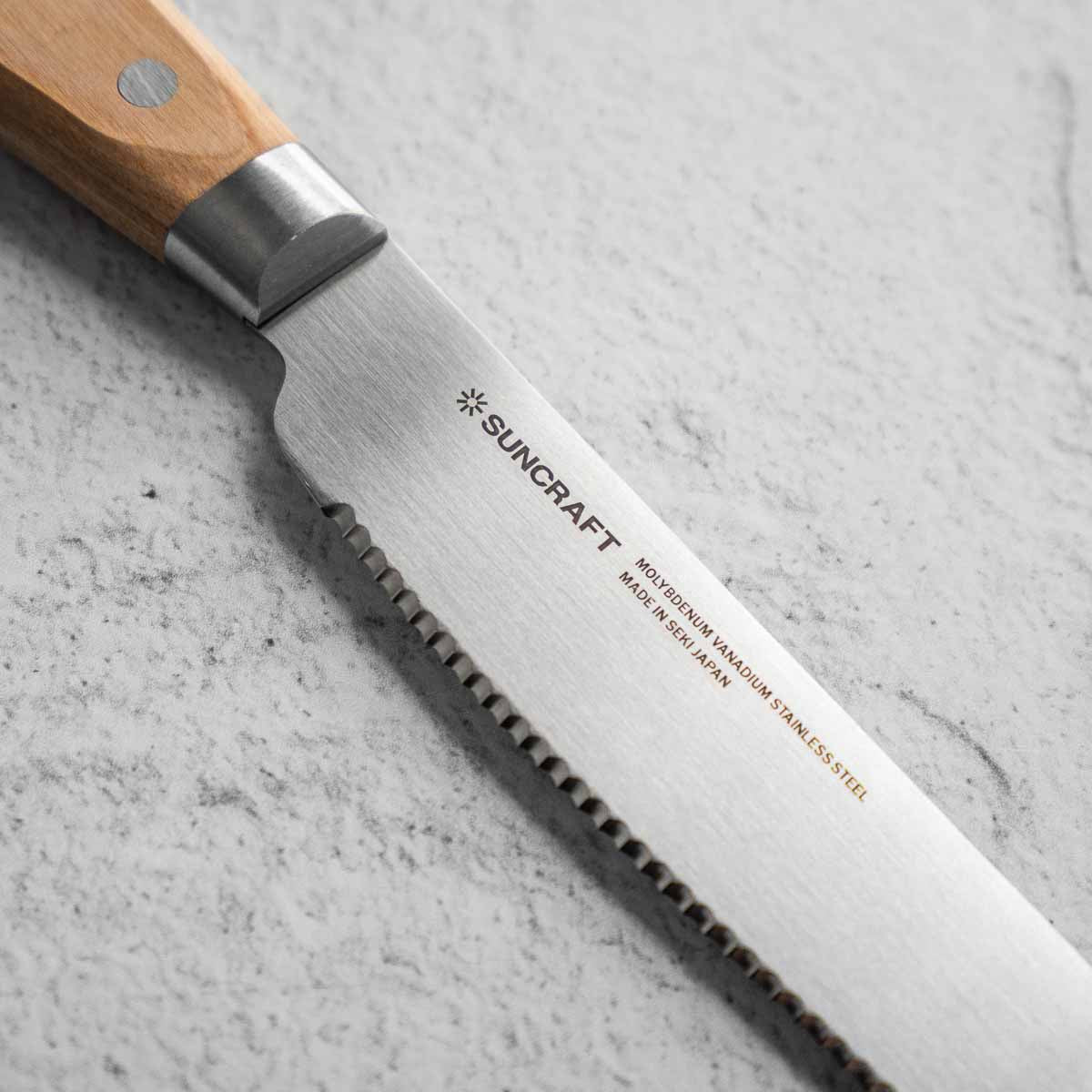Sort by:
Accessories Information
– Plastic blade guard with felt lining
– 22cm length
– Most suited to 18cm to 21cm chef knives
Please note, carbon steel blades, when not oiled, can rust when stored in blade guards lined with felt. Please ensure to completely dry and oil your carbon steel knives before using the blade guard, and not to store them in felt guards for long periods of time.
*Logo may vary from item pictured*
Accessories Information
– Plastic blade guard with felt lining
– 18cm length
– Most suited to 15-17cm chef knives
Please note, carbon steel blades, when not oiled, can rust when stored in blade guards lined with felt. Please ensure to completely dry and oil your carbon steel knives before using the blade guard, and not to store them in felt guards for long periods of time.
*Logo may vary from item pictured*
Knife Information
1894- Mr. Tasaburo Shigematsu, a hardware wholesaler, introduced a new pocket knife with its blade and sheath folded by installing a small handle “Chikiri (tail)” on the blade, while inspired by the knife he brought back from Kagoshima.
He named it “Higonokami Knife” because many of his customers were in Kumamoto area (formally Higo country), which turned out to dramatically increase his sales. The blades have gradually changed their shapes. Unlike single-edged knives, the double-edged blades (V-shaped cross section) were in those days considered common. The earlier blades had a sharper tip (shape of a bamboo leaf), but now they have square shapes. The sheaths had a vertically folding style and a cross folding style, now the vertical one has to be custom made.
In 1911, at the First Kobe Export Articles Competitive Exhibition, Crown Prince (later Emperor Taisho) liked Higonokami on display very much and bought one, which is said to have helped its fame further spread.
The Higonikami is a fantastic traditional utility knife at a low cost.
Specifications
| Style: | Higonokami |
| Blade Length: | 74mm |
| Weight: | 53g |
| Bevel: | Double Bevel |
| Blade Material: | Laminated SK Carbon Steel |
| Handle Material: | Black Nickel |
Knife Information
1894- Mr. Tasaburo Shigematsu, a hardware wholesaler, introduced a new pocket knife with its blade and sheath folded by installing a small handle “Chikiri (tail)” on the blade, while inspired by the knife he brought back from Kagoshima.
He named it “Higonokami Knife” because many of his customers were in Kumamoto area (formally Higo country), which turned out to dramatically increase his sales. The blades have gradually changed their shapes. Unlike single-edged knives, the double-edged blades (V-shaped cross section) were in those days considered common. The earlier blades had a sharper tip (shape of a bamboo leaf), but now they have square shapes. The sheaths had a vertically folding style and a cross folding style, now the vertical one has to be custom made.
In 1911, at the First Kobe Export Articles Competitive Exhibition, Crown Prince (later Emperor Taisho) liked Higonokami on display very much and bought one, which is said to have helped its fame further spread.
The Higonikami is a fantastic traditional utility knife at a low cost.
Specifications
| Style: | Higonokami |
| Blade Length: | 92mm |
| Weight: | 70g |
| Bevel: | Double Bevel |
| Blade Material: | Laminated SK Carbon Steel |
| Handle Material: | Black Nickel |
Knife Information
1894- Mr. Tasaburo Shigematsu, a hardware wholesaler, introduced a new pocket knife with its blade and sheath folded by installing a small handle “Chikiri (tail)” on the blade, while inspired by the knife he brought back from Kagoshima.
He named it “Higonokami Knife” because many of his customers were in Kumamoto area (formally Higo country), which turned out to dramatically increase his sales. The blades have gradually changed their shapes. Unlike single-edged knives, the double-edged blades (V-shaped cross section) were in those days considered common. The earlier blades had a sharper tip (shape of a bamboo leaf), but now they have square shapes. The sheaths had a vertically folding style and a cross folding style, now the vertical one has to be custom made.
In 1911, at the First Kobe Export Articles Competitive Exhibition, Crown Prince (later Emperor Taisho) liked Higonokami on display very much and bought one, which is said to have helped its fame further spread.
The Higonikami is a fantastic traditional utility knife at a low cost.
Specifications
| Style: | Higonokami |
| Blade Length: | 65mm |
| Casing Length: | 90mm |
| Casing Width: | 15mm |
| Weight: | 33g |
| Bevel: | Double Bevel |
| Blade Material: | Laminated SK Carbon Steel Nashiji Finish |
| Handle Material: | Black Steel |
This benchtop holder allows you to easily and safely store your knives on a magnetized pad whilst keeping your knives on display. *Knives not included*
Most suited for WA-handled knives, heavier handles may cause the knife to sit on an angle (e.g. western handle and full metal handle knives).
Knife pad size: 72mm wide at top x 100mm wide at base x 311mm high.
Total holder measurements: 143mm wide x 165mm deep x 350mm high.
200mm VG10 Core Black Damascus Clad Bunka Knife
Specifications
| Style: | Bunka |
| Blade Length: | 200mm |
| Weight: | 175g |
| Bevel: | Double Bevel |
| Blade Material: | VG10 Core Black Damascus Clad |
| Handle Material: | Octagon Pakkawood w/white spacer |
| HRC | 61 |
Knife Information
A classy, cleverly designed bread knife made by Suncraft in Japan. The 2 alternating types of serrations make for easy cutting of bread of all kinds. The deserving winner of the Good Design Awards for kitchenware.
| Style: | Bread Knife - Right handed |
| Blade Length: | 210mm |
| Weight: | 113g |
| Blade Material: | Stainless Steel |








